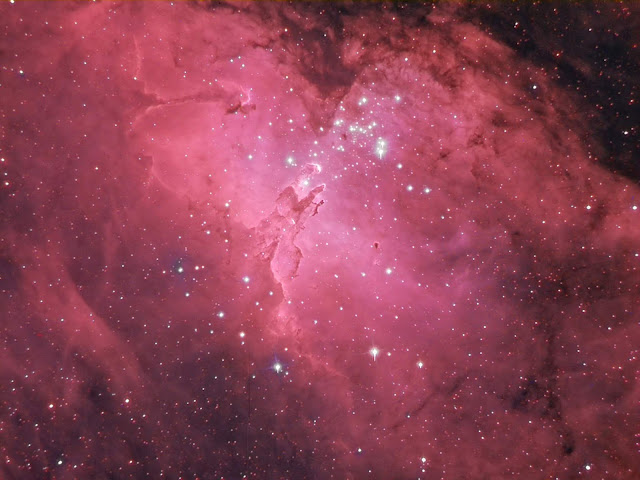The colors around Rho Ophiuchi
All the colors of the Cosmos in one image. The region around Antares (the brightest star, below) and Rho Ophiuchi (above) is a treasure chest full of colorful gems, unique in our sky. In this image different colored stars are easily noticed (the blue ones are hotter than the red-orange ones), two globular clusters and a thick fabric of chiaroscuros in different tones.
The long dark rivers are populated by very cold gas, at around -436°F, and large quantities of dust. The blue region near the top is a reflection nebula, like the one of the Pleiades. The small red region at right, on the other hand, is an emission nebula, with the typical color produced by the rearranging of hydrogen atoms (there isn’t just hydrogen, but you can only see hydrogen’s imprint: they’re two different things!).
In short, the orange nebula on top of Antares is an extremely rare case of an orange reflection nebula. Usually, the gas illuminated by starlight, but not heated enough to become ionized and emit heat, spreads much more than the blue component of the light compared to the red. However when it’s a very red star like Antares, which emits very little blue radiation and illuminates the gaseous region, it can do nothing but spread the red component with greater efficiency and the reflection nebula shines with an uncommon orange hue.
Image taken with a 200mm f4 lens. Average of 300 exposures of 90 seconds with a Sony A7s camera from the Atacama desert, Chile. If we know how to go beyond the mere appearance of a dark celestial sphere without any details, at least at first glance, the Universe rewards us by showing its most beautiful and spectacular jewels: something that no artist in this world could ever imitate.




Comments
Post a Comment